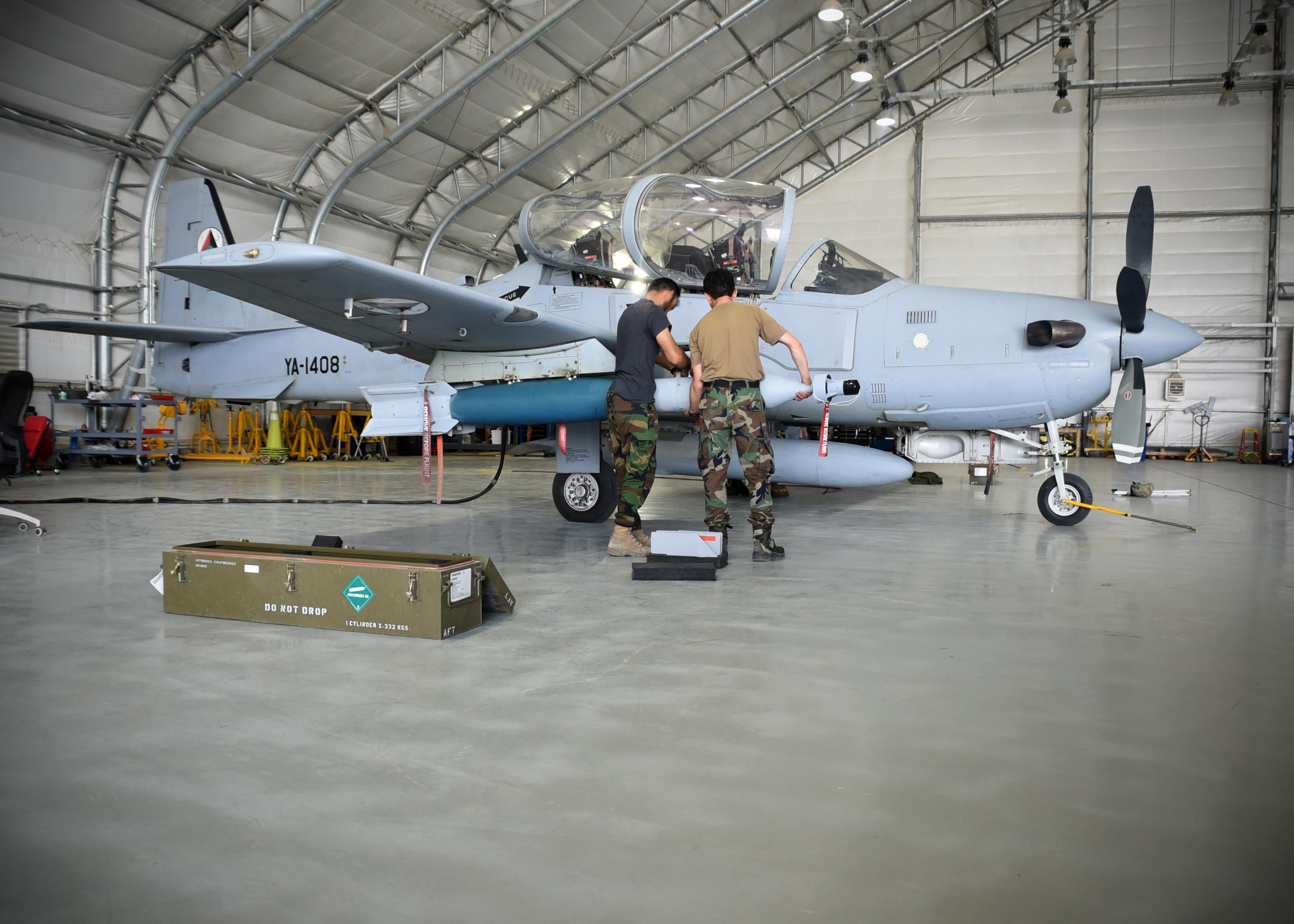Two Afghan Air Force A-29 Super Tucano maintainers download GBU-12s on July 26, 2017, at Kabul Air Wing, Afghanistan. Recently, AAF A-29 maintenance leaders requested to take full responsibility for flightline maintenance operations from Train, Advise, Assist Command-Air advisors and contract maintenance. USAF photo by TSgt. Veronica Pierce.
The Afghan Air Force recently requested to take full responsibility for the flightline maintenance of it’s A-29 fleet, a major goal of USAF advisers in the country.
Until the request, contract maintainers with Sierra Nevada Corp. worked on the flightline to keep the AAF’s small, but growing A-29 fleet active. Earlier this spring, during an Air Force Magazine visit to Kabul, contractors had control of the A-29s at Hamid Karzai International Airport and AAF had just recently taken full control of flightline operations at Mazar e Sharif. The AAF operates 12 A-29s at three locations, with Kandahar Airfield being the third.
The aircraft conducted 138 total strikes in 2016, after flying its first strike in April of that year.
“The AAF has been making great stride in their capability with the A-29,” said Maj. Dale Ellis, 440th Air Expeditionary Advisor Squadron maintenance operations officer, in an Air Forces Central Command release. “Several of the flight- and squadron-level leaders approached advisors and stated that they felt they were ready for full responsibility on the flightline.”
Since the beginning of July, AAF maintainers have been responsible for three days of maintenance per week. But now they requested responsibility for all seven days of the week.
“We want to be responsible for the combat missions and getting the pilots in the air,” said SMSgt. Alokozay, an AAF A-29 maintenance specialist, in the release. “We want to take control (and bring) peace to our country.”
Currently 80 percent of the maintenance is conducted by contractors and 20 percent by Afghan personnel. This includes maintenance off the flightline. USAF advisers are working to reverse that by 2022, though there will always be a need for contractor work in the supply chain, they said.
See also: Building Momentum in Afghanistan from the September issue of Air Force Magazine.
